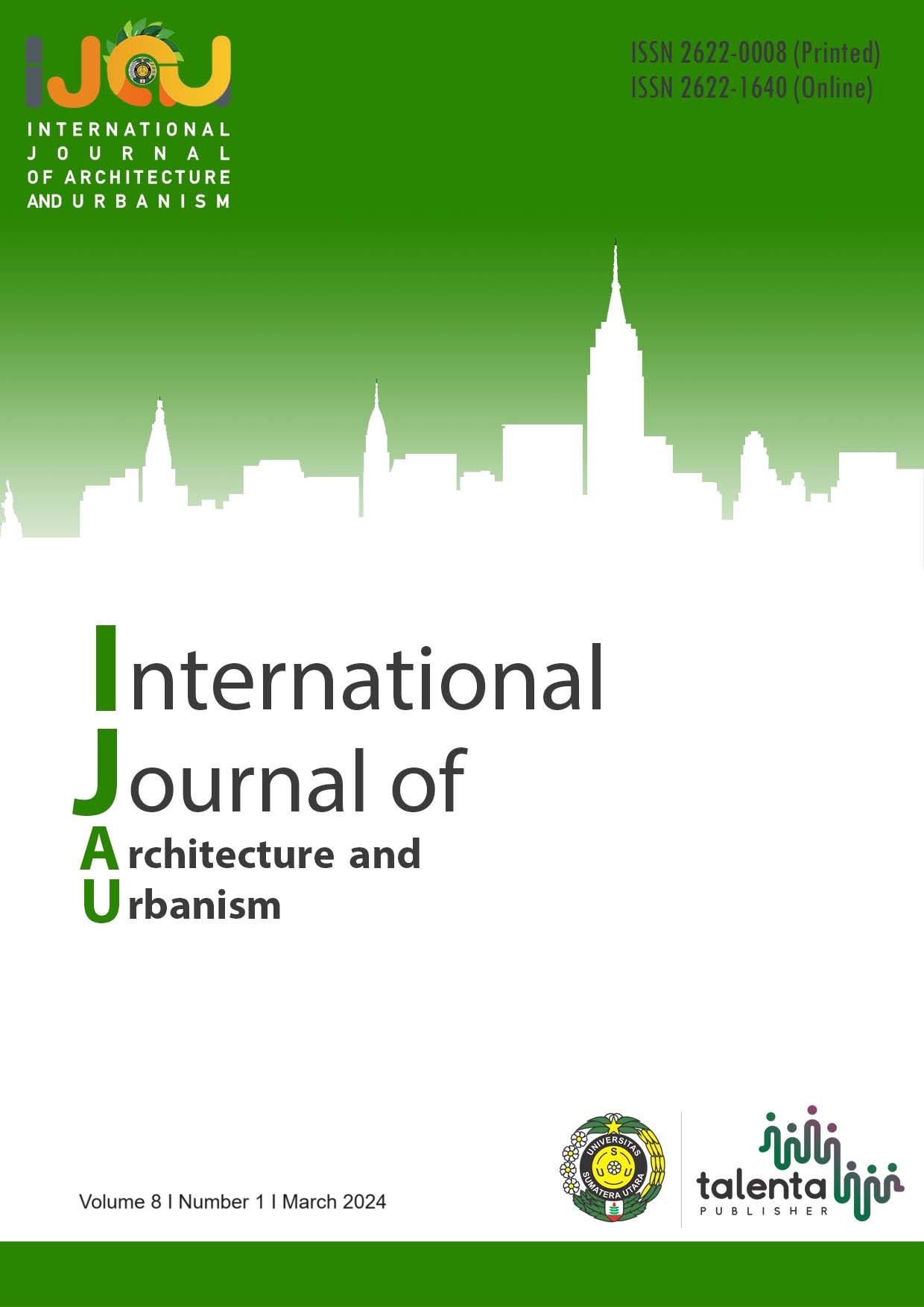Enhancing Lighting Efficiency in Kost's Rooms by Utilizing Bamboo Panels
DOI:
https://doi.org/10.32734/ijau.v8i1.14254Keywords:
bamboo, building material, sustainable, lighting, boarding house, panel technology.Abstract
Abstract:
This research paper examines the sustainability aspects of bamboo as a versatile building material, with a particular emphasis on its potential to enhance lighting efficiency in construction. Sustainability in building construction necessitates eco-friendliness, affordability, versatility, and durability, all of which bamboo embodies. Beyond its well-documented thermal benefits, bamboo's rapid growth rate, adaptability to diverse climates, and inherent qualities position it as an eco-conscious choice for building materials. Notably, bamboo offers advantages such as high yield, environmental friendliness, lightweight properties, and rapid maturation for harvesting, making it a cost-effective option. This research delves into the key attributes and noteworthy applications of bamboo, including its innovative use in student boarding houses around Universitas Islam Indonesia.
Through rigorous research, Bamboyasa workshop and experiments, we identified one of the 3 bamboo panels we made then selected the most promising panel for practical experimentation, focusing on bamboo panel technologies then modify the design to enhance the daylighting and thermal target. Our aim is to harness bamboo's unique characteristics to enhance human comfort and create sustainable building components tailored to lighting efficiency.
Downloads
Downloads
Published
How to Cite
Issue
Section
License
Copyright (c) 2024 International Journal of Architecture and Urbanism

This work is licensed under a Creative Commons Attribution-ShareAlike 4.0 International License.


.png)










